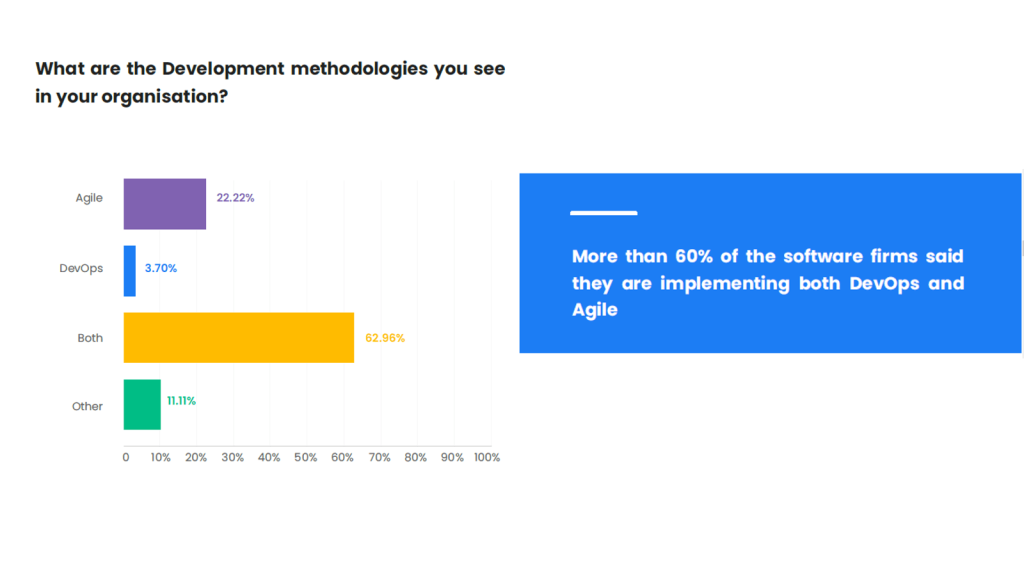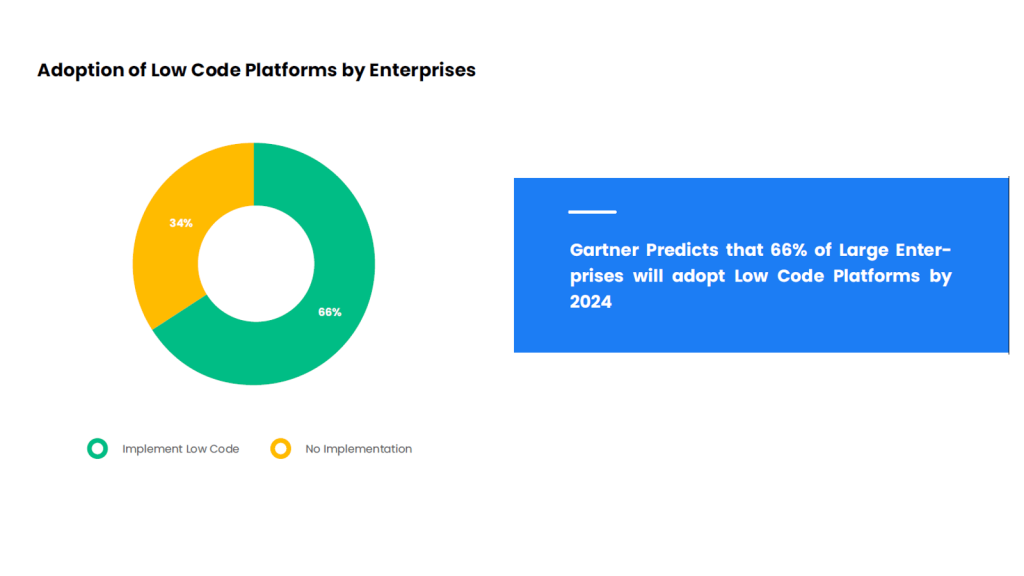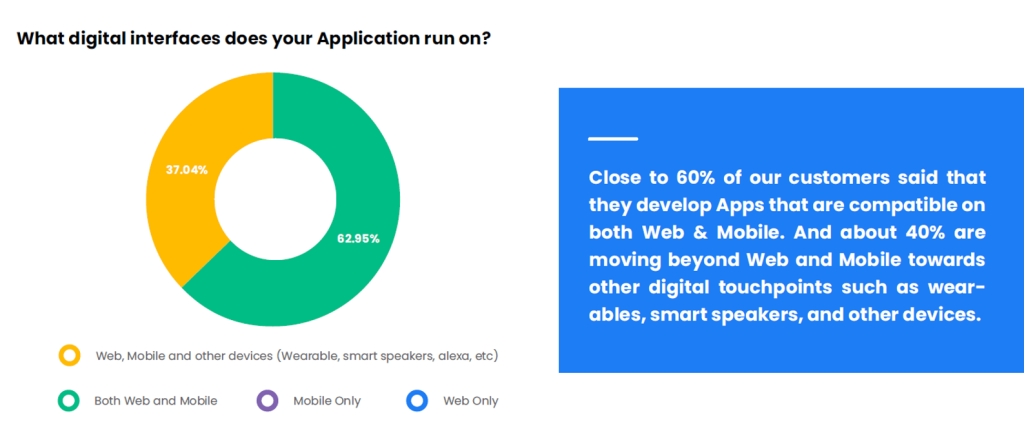There are a lot of developers creating thousands of new apps almost every day. With so many apps available in the market, there is no room for error, as consumers are looking for the quality and utility of the apps. With the influx of new apps, there has been an enormous upheaval in abandoning apps as well. Now how do we know this? And how did we arrive at such a conclusion in the first place is a question you might be asking yourself.
Well, we have spent a lot of time over the past couple of months studying the app trends and conducted an elaborate survey with our clients and users. Our users mostly comprise business leaders and industry stalwarts in the app testing community. Even as we conducted the survey, we came across umteen sets of tools and methodologies that are helping organizations build better quality apps and release faster updates to fix the already existing apps. We are writing this blog to share a bit of insight with you and encourage you to download the full report for a deeper understanding.
Trend 01 Rise in adoption of Continuous Testing methodology
There has been a significant increase in the interest in continuous testing methodologies. Many business leaders have understood the importance of testing on the go by adopting continuous testing methodologies like Agile & DevOps. On asking what methodologies the organizations were going to adopt to speed up the production releases, 60% of the respondents in our survey said implementing Continuous Testing methodologies will be their go-to strategy.

Fast integrations and faster improvements to products are possible by creating a culture of Continuous Improvements which is achieved by adopting methodologies like Agile and DevOps. These methodologies play an important role in the realm of Continuous Testing. Automation and Test orchestration are a few other considerations that will enhance the Continuous Testing strategy once implemented. Quality@speed has been a never-ending saga in the testing space and Continuous Testing is a key contributor to achieving it.
Continuous Testing is going to be a vital part of the success stories of app testing. Ensuring that we implement it into our testing strategy will surely benefit organizations to serve the clients better.
Trend 02 Increase in Testing Infra Migration on Cloud
The pandemic brought the world to a standstill and threw in a challenge of working remotely. While most businesses moved their functioning to cloud-based solutions, the need for testing remotely is on the rise as well. About 70% of our users have seen a significant shift in using SAAS products as a result of COVID-19. Which is a huge win for business as these changes have been on the back burner for a long time. Industry Stalwarts look at the pandemic as a much-needed savior that rapidly brought drastic changes to business processes. Most users have moved to leverage many Cloud platforms. An example of a cloud solution for Web Testing on real browsers by pCloudy is shown in the picture below.
The new normal of working remotely has made business leaders realize that productivity can come from our homes too. Some of the Test engineers we spoke to mentioned that they can perform most Functional and Automation tests remotely. The significance of Cloud migration and the use of SAAS tools has become a necessity more than ever. Businesses have started to look towards Cloud solutions to assist with the ongoing remote working agenda. The tools that help businesses transition into the digital space are all set to share the limelight this year. The use of cloud systems has become a priority for CIOs and CTOs of many businesses these days.
Studies show that the future of work is encapsulated in working remotely. Cloud migration is at an all-time high and will continue to scale greater heights considering the number of systems and applications that are migrating daily.
Trend 03 Increasing use of Artificial Intelligence for Testing
Artificial intelligence (AI) plays a vital role in the digital world and is a key component of future applications and systems. The information age is moving at a rapid pace and flooding in tons of data for analysis. As more complex software applications are being developed, releasing the applications that comply with the business requirements are becoming a critical component. And that’s where AI can step in to help. One of the key uses of AI in Testing has been the use of Visual AI. Visual AI has enabled test engineers to validate the behavior and rendering of code with greater accuracy as its use for visual validation has been increased. Running visual validation alongside the standard unit tests will not only save time but also bridge the gap between automation and Visual AI.
There has been an exponential growth in the use of AI for testing, the benefits it brings go a long way in easing the testing process. There is a lot more that can be achieved if organizations implement AI for various testing functions. AI-driven Testing will lead the way to transition from Quality Assurance (QA) to Quality Engineering (QE). Enterprise leaders that invest the time to understand the role of AI in testing are going to fetch huge prospects in the future.
implementing AI in the testing functions is sure to help organizations take greater leaps of progress in the coming years. Exploring it in the current scenario at your organization is surely going to benefit the company as it increases the efficiency in performing productive tasks and eases human effort.
Trend 04 Rise of Low code Development Platforms for Testing
The Low Code revolution is another game-changer that will help increase the speed at which apps are developed, tested, and released. Many companies are starting to move towards the Low Code revolution. And since Rapid Automation has always been on the agendas of many software firms. Choosing Low code to rapidly develop apps makes more sense in the software or App development world. Many developers and testers are looking forward to Low code development platforms in the coming year. As this would help them increase the speed of developing apps, and in-turn decrease the speed of the release cycle.

The giant research advisory company Gartner, predicts that Low Code application building will make up more than 65% of all app development functions by 2024 with about 66% of large enterprises using a minimum of four Low Code Platforms. Low Code Development Platforms allows users to develop rapid prototypes without having to involve a formal software development staff. And you can always consult the developers once the prototypes can be compared, edited out, or merged into a mature system for development, which reduces the time and cost of developing applications drastically.
The evolution of the low code platforms is set to transform the future of app building & development. They are ready to disrupt the app industry in the days to come.
Trend 05 Need for Multi-Experience Testing
Businesses are rising to the call of digitalization due to the increasing demand for various digital avenues. Multi experience app development and personalized notifications are set to take the stage in 2021. One of the questions we had asked from our users in the survey was about the digital interfaces they are using to run their application on. Close to 60% of our customers said that they develop Apps that are compatible on both Web & Mobile. And about 40% are moving beyond Web and Mobile towards other digital touchpoints such as wearables, smart speakers, and other devices.

A majority of businesses have evolved to a hybrid model of doing business both online and offline. When we speak about enhancing the Consumer experience, Multi-Experience Testing takes the centerstage. The use of Multi-Experience Development Platforms is on the rise as consumer experience is set to make a huge impact in 2021. Digitalization has brought in a new era of reaching the consumer at multiple digital touchpoints. Omni-channel communication, multi-platform accessibility, and ease of transacting have become crucial aspects for the growth of any business these days. The need to test apps across different platforms will become a dire necessity to check app design compatibility with all touchpoints. The need for Multi-experience Testing is all the more important to address this particular need in the coming days. Businesses will need to focus on Multi Experience Digital Testing to advance in taking a leap in digital transformation.
Multi-Experience Testing will enable testers to various modalities, digital touchpoints, apps, etc; to provide an engaging and seamless consumer experience to the users.
Conclusion
While there may be many other technologies that might be advancing. Looking at various studies and market researches we have concluded that the Implementation of Continuous Testing; Use of Low Code development tools; Muti-Experience Testing; Migration of Testing Infrastructure on the Cloud; and Artificial Intelligence in Testing are surely going to set the pace for this year. Most of these technologies complement and overlap with each other in their understanding and usage. Implementing the changes to use these technologies in your organization is surely going to add value in the coming year. If you have liked what you read and want to get more details about the statistics and various studies. You can follow the link given below to access and read the full report.







